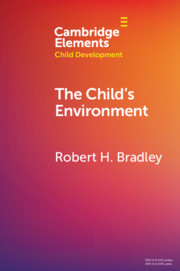Element contents
The Child's Environment
Published online by Cambridge University Press: 20 October 2020
Summary
- Type
- Element
- Information
- Series: Elements in Child DevelopmentOnline ISBN: 9781108866040Publisher: Cambridge University PressPrint publication: 19 November 2020
References
- 16
- Cited by

